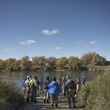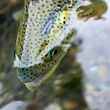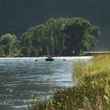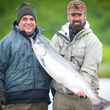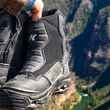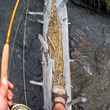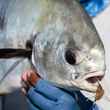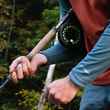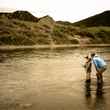Stonefly Press announced today its newest fly fishing book - North America’s 56 Best Fly-Fishing Tailwater Destinations. The 272-page book was written by Terry and Wendy Gunn the co-hosts of Fly Fish Television Magazine.
The importance of tailwater fly fishing is explained by Lefty Kreh in his foreword for the book: “Tailwaters are the salvation of fly fishing for trout. These are the streams or rivers exiting from dams with the flow dependent on the amount of water released. They furnish a constant supply of clear, cold water necessary for trout and their food.”
Kreh goes on to explain that most trout fishermen mistakenly think all major rivers are located in the West, but he claims “some of the finest are in the East,” and “are among the best trout rivers anywhere in this country and within easy driving distance of thousands of anglers.”




